Themed collection Catalysis Science & Technology 10th Anniversary Symposium

Reaction mechanisms at the homogeneous–heterogeneous frontier: insights from first-principles studies on ligand-decorated metal nanoparticles
The frontiers between homogeneous and heterogeneous catalysis are progressively disappearing.
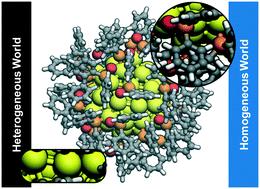
Catal. Sci. Technol., 2019,9, 5173-5185
https://doi.org/10.1039/C9CY01351B
Reductant composition influences the coordination of atomically dispersed Rh on anatase TiO2
Distinct local environments for atomically dispersed Rh species on anatase TiO2 result from reduction treatments under CO and H2.
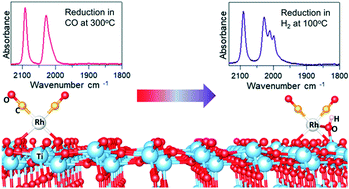
Catal. Sci. Technol., 2020,10, 1597-1601
https://doi.org/10.1039/D0CY00146E
Selective catalytic reduction of NO by cerium-based metal–organic frameworks
NO has been catalytically converted by Ce-UiO-66 and bimetallic Ce/Zr-CAU-24.
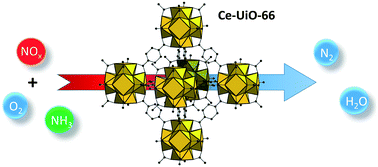
Catal. Sci. Technol., 2020,10, 337-341
https://doi.org/10.1039/C9CY02029B
Metal free-covalent triazine frameworks as oxygen reduction reaction catalysts – structure–electrochemical activity relationship
A covalent triazine framework coated on glassy carbon electrode performs high catalytic activity towards the ORR.
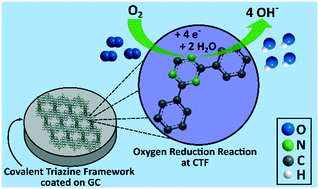
Catal. Sci. Technol., 2021,11, 6191-6204
https://doi.org/10.1039/D1CY00405K
α-Fe2O3/Ag/CdS ternary heterojunction photoanode for efficient solar water oxidation
By taking full advantage of the α-Fe2O3/Ag/CdS ternary heterojunction in charge separation and transfer, light harvesting and electrocatalytic water oxidation, obviously improved water oxidation performance was achieved on the photoanode.
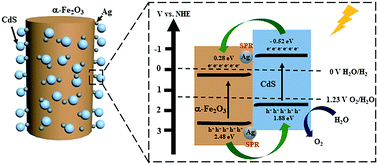
Catal. Sci. Technol., 2021,11, 5859-5867
https://doi.org/10.1039/D1CY00896J
Early-stage particle fragmentation behavior of a commercial silica-supported metallocene catalyst
Olefin polymerization starts at the outer surface and at the macropores walls. Here fragmentation occurs by peeling off the catalyst in a layer-by-layer mode with, in ideal conditions, the simultaneous formation of bisection-type fractures across the catalyst inner domains.
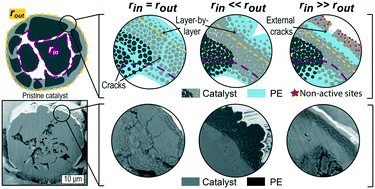
Catal. Sci. Technol., 2021,11, 5335-5348
https://doi.org/10.1039/D1CY00930C
Efficient photodegradation of 2-chloro-4-nitrophenol over Fe-doped BiOCl nanosheets with oxygen vacancy
Fe-BiOCl nanosheets exhibited 3.1 times enhanced photoactivity, which was attributed to the Fenton-like reaction and the better charge separation, thus more reactive oxygen species (˙OH and ˙O2−) involved in the photodegradation process.

Catal. Sci. Technol., 2021,11, 5119-5124
https://doi.org/10.1039/D1CY00807B
A surface-alkalinized Ti3C2 MXene as an efficient cocatalyst for enhanced photocatalytic CO2 reduction over ZnO
Surface alkalinized Ti3C2 MXene with high electronic conductivity and CO2 adsorption/activation ability is used as an efficient co-catalyst for boosting the photocatalytic activity of ZnO for CO2 reduction into hydrocarbon solar fuels.

Catal. Sci. Technol., 2021,11, 4953-4961
https://doi.org/10.1039/D1CY00716E
Selective synthesis of para-xylene and light olefins from CO2/H2 in the presence of toluene
para-xylene and light olefins are co-produced in CO2 hydrogenation in the presence of toluene over OXZEO composite catalyst.

Catal. Sci. Technol., 2021,11, 4521-4528
https://doi.org/10.1039/D1CY00602A
Selective catalytic reduction of NO over Cu-AFX zeolites: mechanistic insights from in situ/operando spectroscopic and DFT studies
In situ/operando spectroscopic experiments and DFT calculations unravel the redox mechanism of NH3-SCR over Cu-AFX zeolites.

Catal. Sci. Technol., 2021,11, 4459-4470
https://doi.org/10.1039/D1CY00282A
Hydrogenation of dimethyl oxalate to ethylene glycol over Cu/KIT-6 catalysts
Copper supported on KIT-6 mesoporous silica was prepared via ammonia evaporation (AE) method and applied for the catalytic hydrogenation of dimethyl oxalate (DMO) to ethylene glycol (EG).

Catal. Sci. Technol., 2021,11, 2403-2413
https://doi.org/10.1039/D0CY02334E
New insights into the biphasic “CO-free” Pauson–Khand cyclisation reaction through combined in situ spectroscopy and multiple linear regression modelling
Multiple linear regression modelling is used to analyse in situ Raman spectra recorded during a “CO-free” Pauson–Khand type cyclisation which enables a knowledge-driven optimisation protocol.
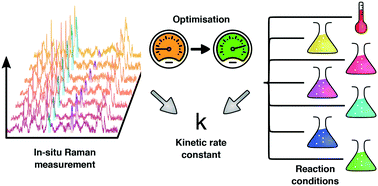
Catal. Sci. Technol., 2021,11, 1626-1636
https://doi.org/10.1039/D0CY02267E
Clean protocol for deoxygenation of epoxides to alkenes via catalytic hydrogenation using gold
Au NP catalyst combined with triethylphosphite, P(OEt)3, is remarkably more reactive than solely Au NPs for the selective deoxygenation of epoxides to alkenes.
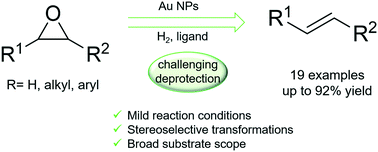
Catal. Sci. Technol., 2021,11, 312-318
https://doi.org/10.1039/D0CY01695K
TiO2 supported Ru catalysts for the hydrogenation of succinic acid: influence of the support
The TiO2 support composition and the reduction method impact both metal–support interaction and Ru nanoparticle size driving the catalyst performances in succinic acid hydrogenation.

Catal. Sci. Technol., 2020,10, 6860-6869
https://doi.org/10.1039/D0CY01446J
Substrate substitution effects in the Fries rearrangement of aryl esters over zeolite catalysts
The reaction scheme of the Fries rearrangement of aryl esters over zeolite catalysts strongly depends on the framework type, acidic properties, and substrate identity.
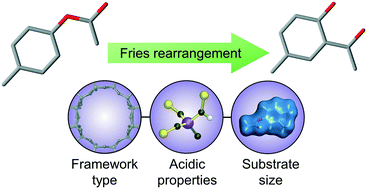
Catal. Sci. Technol., 2020,10, 4282-4292
https://doi.org/10.1039/D0CY00590H
Unexpected linker-dependent Brønsted acidity in the (Zr)UiO-66 metal organic framework and application to biomass valorization
The functionality of the UiO-66(Zr) linkers affects the number of defects on the Zr6 clusters, leading to differences in the MOFs' Brønsted acidity, which promotes the dehydration of fructose into HMF.
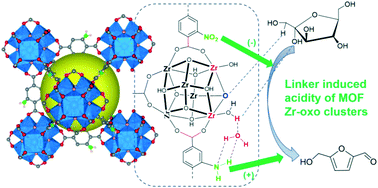
Catal. Sci. Technol., 2020,10, 4002-4009
https://doi.org/10.1039/D0CY00638F
Mechanistic insights into the oxidation of copper(I) species during NH3-SCR over Cu-CHA zeolites: a DFT study
DFT calculations suggest that Cu(I) oxidation with O2 as the sole oxidant plays a major role in the oxidation half cycle of standard NH3-SCR over Cu-CHA zeolites.
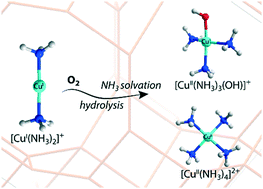
Catal. Sci. Technol., 2020,10, 3586-3593
https://doi.org/10.1039/D0CY00379D
Piperazine-promoted gold-catalyzed hydrogenation: the influence of capping ligands
The presence of capping ligands can block the adsorption of the amine ligand on gold NPs, preventing the formation of a ligand–metal interface able to activate H2 for selective hydrogenation reactions.
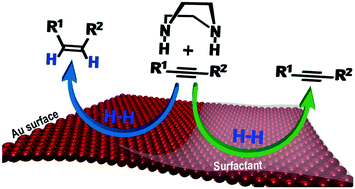
Catal. Sci. Technol., 2020,10, 1996-2003
https://doi.org/10.1039/C9CY02016K
Dual catalyst system for selective vinyl chloride production via ethene oxychlorination
A dual system featuring ZrO2-supported CeO2 and Ca-doped Al2O3 catalysts enables the direct production of vinyl chloride via ethene oxychlorination.

Catal. Sci. Technol., 2020,10, 560-575
https://doi.org/10.1039/C9CY01801H
Role of tungsten modifiers in bimetallic catalysts for enhanced hydrodeoxygenation activity and selectivity
Addition of tungsten to supported platinum catalysts increased the rate of benzyl alcohol hydrodeoxygenation via a bifunctional mechanism, whereas undesirable decarbonylation was suppressed due to blocking of platinum terrace sites.
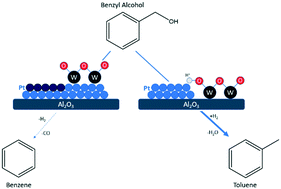
Catal. Sci. Technol., 2020,10, 414-423
https://doi.org/10.1039/C9CY02240F
Enhancing electrostatic interactions to activate polar molecules: ammonia borane methanolysis on a Cu/Co(OH)2 nanohybrid
Cu/Co(OH)2 was prepared from an in situ method and the electrostatic interaction arising from the MSI was controlled by the Cu/Co ratio. The optimized catalyst exhibits a high catalytic performance for AB methanolysis.
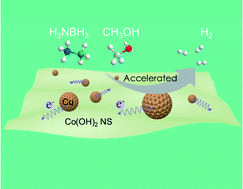
Catal. Sci. Technol., 2019,9, 2828-2835
https://doi.org/10.1039/C9CY00584F
Versatile etherification of alcohols with allyl alcohol by a titanium oxide-supported molybdenum oxide catalyst: gradual generation from titanium oxide and molybdenum oxide
A sustainable method to synthesize allyl ethers from allyl alcohol by the simple mixing of TiO2 and MoO3 catalysts.
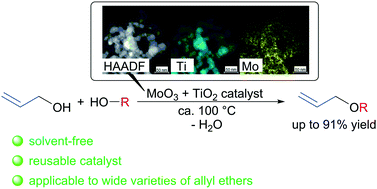
Catal. Sci. Technol., 2018,8, 4618-4625
https://doi.org/10.1039/C8CY00613J
Merrifield resin-assisted routes to second-generation catalysts for olefin metathesis
Phosphine-scavenging Merrifield resins can significantly facilitate the synthesis of highly active Ru metathesis catalysts, including the second-generation Grubbs, Hoveyda, and indenylidene catalysts (GII, HII, InII).

Catal. Sci. Technol., 2018,8, 1535-1544
https://doi.org/10.1039/C7CY02278F
Relevance of the Mo-precursor state in H-ZSM-5 for methane dehydroaromatization
Although the local geometry of Mo in Mo/HZSM-5 has been characterized before, we present a systematic way to manipulate the configuration of Mo and link it to its catalytic properties.
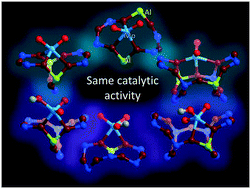
Catal. Sci. Technol., 2018,8, 916-922
https://doi.org/10.1039/C7CY01789H
Bio-based acrylic acid from sugar via propylene glycol and allyl alcohol
Propylene glycol is converted to acrylic acid via dehydration to allyl alcohol. A process flow scheme is proposed, based on distillation resistance.

Catal. Sci. Technol., 2018,8, 289-296
https://doi.org/10.1039/C7CY01416C
Direct and selective hydrogenation of CO2 to ethylene and propene by bifunctional catalysts
A bifunctional catalyst was designed to directly and selectively hydrogenate CO2 to ethylene and propene with a high selectivity of 80–90% in hydrocarbons by combining the synthesis of methanol and methanol-to-olefins processes.
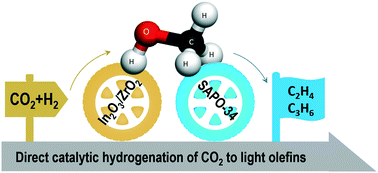
Catal. Sci. Technol., 2017,7, 5602-5607
https://doi.org/10.1039/C7CY01549F